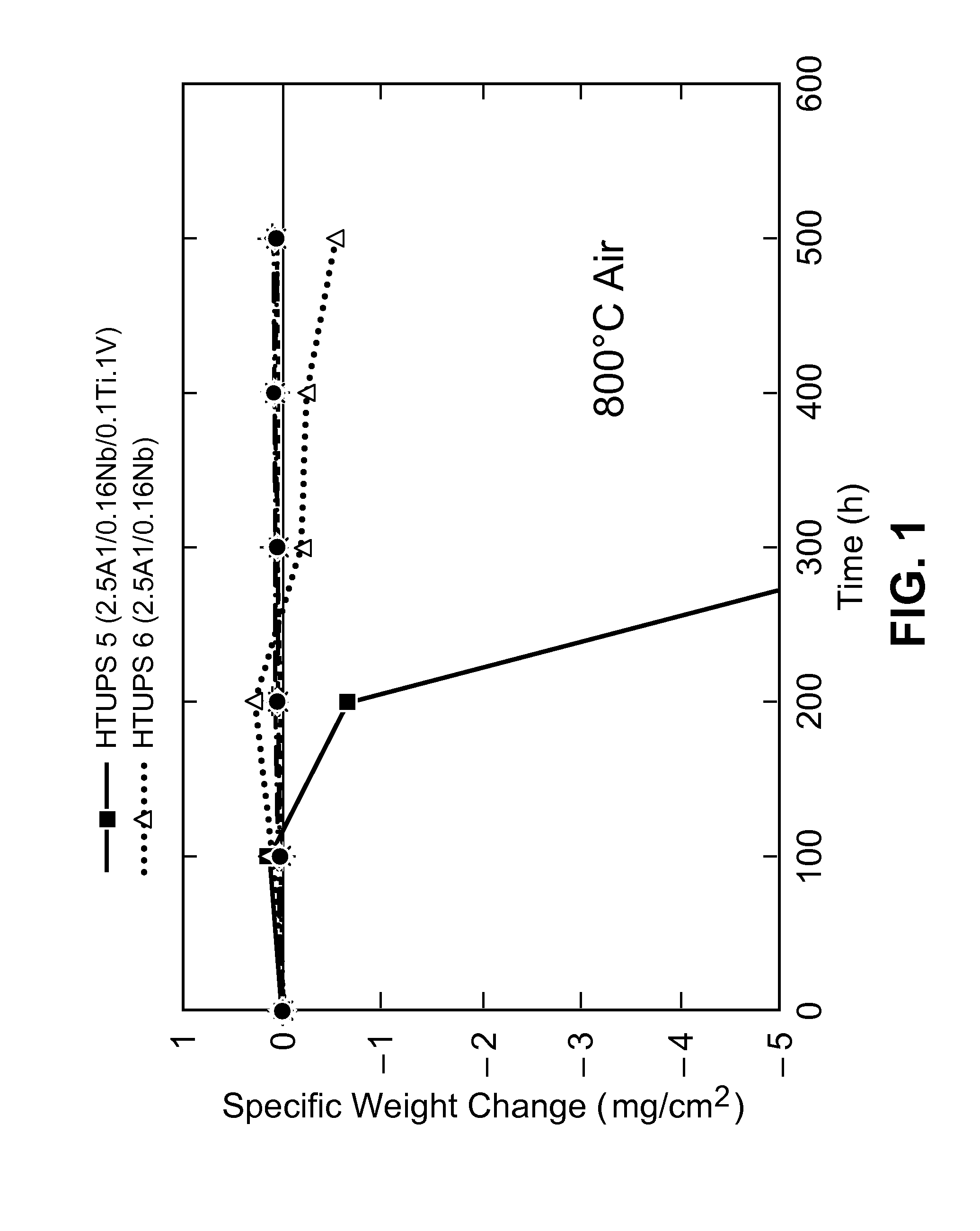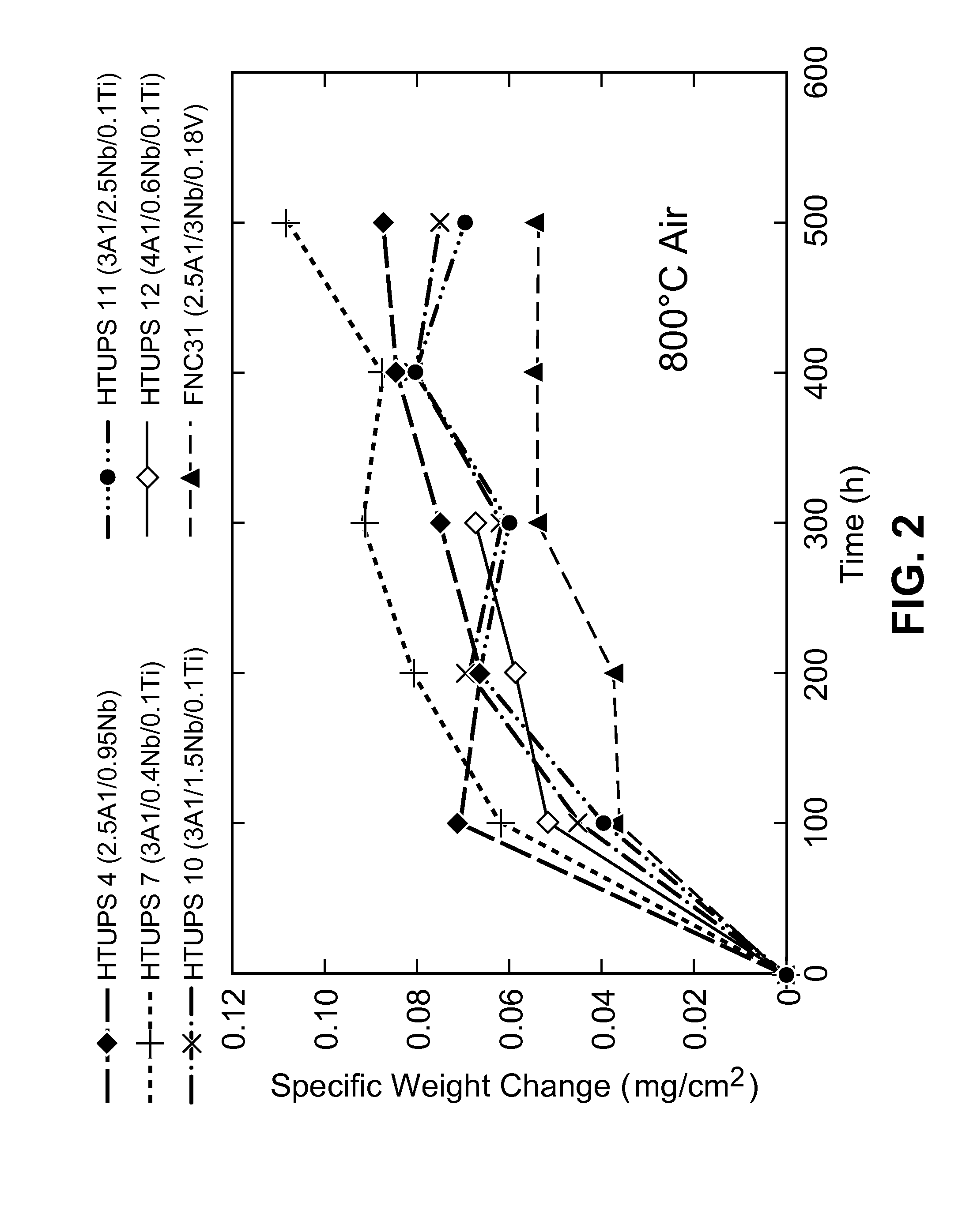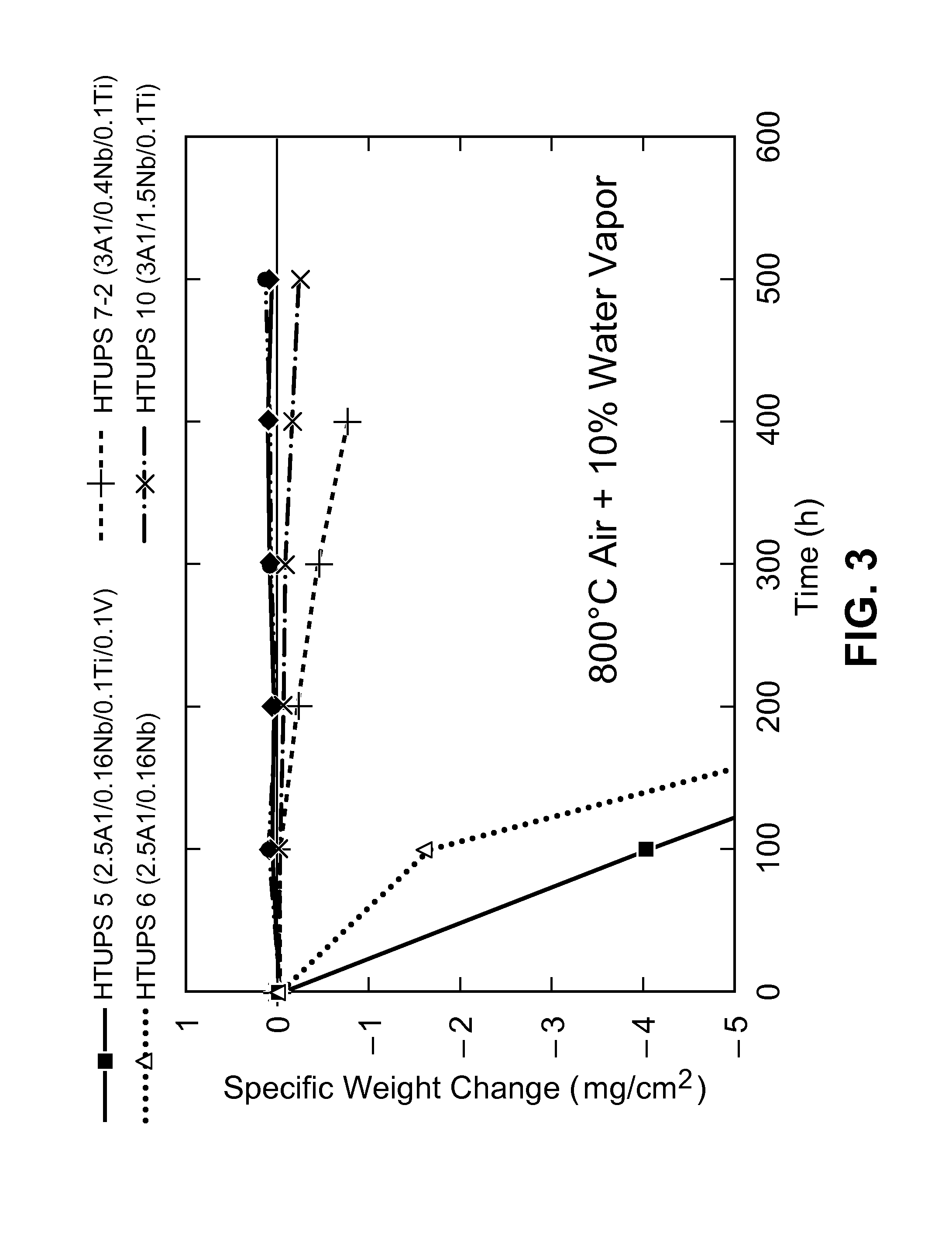High Nb, Ta, and Al Creep- and Oxidation-Resistant Austenitic Stainless Steels
a technology of austenitic stainless steel and creep, which is applied in the field of high nb, ta, and al creepand oxidationresistant austenitic stainless steel, which can solve the problems of increasing less desirable, affecting the performance of the product, and affecting the quality of the produ
- Summary
- Abstract
- Description
- Claims
- Application Information
AI Technical Summary
Benefits of technology
Problems solved by technology
Method used
Image
Examples
Embodiment Construction
[0014]The present invention is based on the surprising finding that higher Nb levels than that disclosed in the above referenced parent application can improve oxidation resistance. Moreover, higher levels of Al were found to be feasible while still maintaining a single phase austenitic matrix to achieve creep resistance. Higher Al and / or Nb levels should permit greater durability, and even higher operating temperatures. Based on their similar chemical behavior and reactivities, Ta additions can also be used in place of Nb, or in partial combination with Nb, to produce the desired oxidation resistance improvements, and MC carbide type strengthening additions (M=Nb, Ta, Ti, V).
[0015]The alloy HTUPS 3, Fe-20 Ni-14 Cr-3.8 Al base showed a two-phase austenitic (face centered cubic (fcc))+delta ferrite (body center cubic (bcc)) structure. The delta ferrite converts to brittle sigma phase when exposed in the intended operation range, and creep resistance is lost. It was therefore decided ...
PUM
| Property | Measurement | Unit |
|---|---|---|
| creep rupture elongation | aaaaa | aaaaa |
| weight percent | aaaaa | aaaaa |
| microstructure | aaaaa | aaaaa |
Abstract
Description
Claims
Application Information
 Login to View More
Login to View More - R&D
- Intellectual Property
- Life Sciences
- Materials
- Tech Scout
- Unparalleled Data Quality
- Higher Quality Content
- 60% Fewer Hallucinations
Browse by: Latest US Patents, China's latest patents, Technical Efficacy Thesaurus, Application Domain, Technology Topic, Popular Technical Reports.
© 2025 PatSnap. All rights reserved.Legal|Privacy policy|Modern Slavery Act Transparency Statement|Sitemap|About US| Contact US: help@patsnap.com



